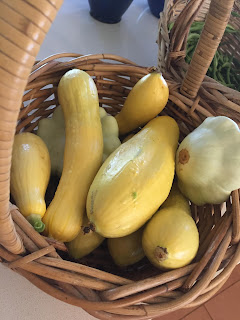His Eye is on the Sparrow--A Lesson in Sustainability
 |
| House Sparrow -- Courtesy of Dr. Vijay Anand Ismavel's iNaturalist page |
Recently in my internet ramblings I came across The Sparrow's Nest, a blog of Vijay Anand Ismavel. Vijay and his wife Ann are missionary doctors who have been serving in Assam, India, since 1992. They have done an amazing work of raising Makunda Leprosy and General Hospital from dilapidated ruins
to a high-quality, accessible healthcare in low-resource settings facility.
Their story is an amazing account of personal sacrifice and God's abundant care. Dr. Vijay is also very interested in bio-diversity and has a beautiful collection of images he has taken around the area of the Makunda Hospital.
Here is the point at which I intersect with Dr. Vijay's story. Dr. Vijay in his blog recounts his story of the beginning of the Makunda Leprosy Colony.
In 1935, Dr. Crozier, a Christian medical missionary from the Baptist Mid-Missions in USA had started the Alipur Mission Hospital near Silchar (later named the Burrows Memorial Christian Hospital). Soon many patients started to come for treatment and among them were leprosy patients. Unable to admit them (for fear of infecting others and the all-pervasive stigma), the missionaries searched for a large piece of land to start a colony. In 1950, such a piece of land was found, 1000 acres of land in the other end of the Cachar District (now Karimganj District) was being sold by the widow of a man who had purchased the land hoping to convert it into a tea-estate. The land was purchased (at present the hospital has only 350 acres of land, the remaining having been taken over by the government), and a team of mission staff started to develop the land, build homes for the staff and wards for the patients, aluminium Quonset huts (6) for the sick ones and large Assam type barracks for the others and develop a large farm to feed the rapidly growing colony. The result was a completely self-sufficient leprosy colony housing about 300 patients. Almost everything was grown on the campus – rice, fish, poultry, oil (from mustard seeds), cotton and silk for clothing, timber and bamboo for housing, sugar (from sugarcane), dal and vegetables. Only salt was purchased from outside. Leprosy patients were brought from everywhere – including all the northeast Indian states and surrounding countries. An American surgeon, Dr. Gene Burrows, joined the hospital and started general medical work (in addition to leprosy work). He started treatment of the leprosy patients, initially with chaulmoogra oil and later with dapsone. He did reconstructive surgery on those who had correctable deformities. Patients whose families were willing to keep them at home received treatment in mobile camps. Unfortunately, in the early 1980s, Dr. Burrows and all the expatriate staff were asked to leave India, never to return. The hospital remained closed till we joined, a decade later.
I was amazed about the sustainability of the early hospital, growing almost everything they needed to feed and clothe the staff and leprosy patients at the hospital, only needing to purchase salt from the outside. A section of the new hospital is named the "Burrows Memorial Christian Hospital."
I responded to the blog recounting commenting that I had known Betty and Gene Burrows and their children when I was a little girl. Whenever they came back to the states on furlough, they stayed with our church, Shady Acres Baptist Church, in Houston, Texas. Betty and Gene directed our Vacation Bible School, telling us all those wonderful stories about Makunda. They were so inspiring. We ate Indian food at their house with our hands. I played with their seven children: John, Ruthie, Grace, Mary, Elizabeth…I can’t remember all their names. After they went back, we rolled bandages for the leprosy colony out of old sheets and stuffed envelopes with their newsletters. I have thought of their ministry often. I got this reply from Dr. Vijay:
We visited Mrs. Bette Burrows in Missionary Acres in 2007 but sadly were unable to see Dr. Gene Burrows. In our early years at Makunda we received a number of parcels containing rolled bandages which were used for dressing wounds of leprosy patients.
Perhaps some of those bandages were sheets I ripped and rolled up.
Here are a couple of still picutres from a 35mm film that my father took of the Vacation Bible School at Shady Acres Baptist Church.
I found this picutre of Gene Borrows as an infant, his father, Lilburn Ira Burrows (1901-1947), and his mother, Beulah Mae Young (1903-1991). Records indicate that his father also served as a Baptist Mid-Missions medical missionary in Assam, India.









Comments
Post a Comment